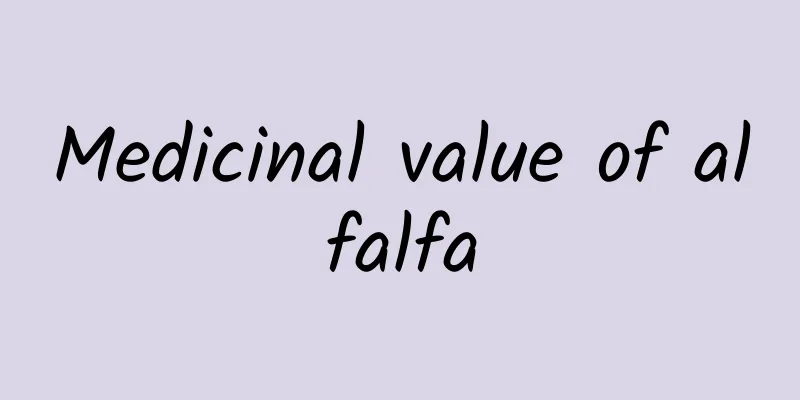The efficacy and function of grains

|
Schisandra chinensis, to put it simply, is a fruit with five medicinal effects: pungent, sweet, sour, bitter, and salty. It is very unique among Chinese herbal medicines that generally contain only one or two medicinal flavors. This kind of fruit, which has all five flavors and the five elements, can fully play a balancing role on the five internal organs of the human body - heart, liver, spleen, lungs and kidneys. The effects of Schisandra chinensis: It can nourish the lungs, nourish the kidneys, promote the production of body fluids and quench thirst, reduce sweating, and astringe semen. It is used to treat lung deficiency, wheezing and coughing, dry mouth and tongue causing thirst, night sweats, emaciation due to overwork, nocturnal emission and spermatorrhea, and long-term diarrhea and dysentery. 1. Effect on the central nervous system. Schisandra chinensis has a significant sedative effect. Schisandra chinensis extract and alcohol can reduce independent activity in mice, increase barbiturate sleep time, inhibit aggressive behavior in animals, resist electric shock and acid convulsions, and the effect is similar to that of tranquilizers. It also has analgesic and muscle-weakening effects. 2. Liver protection effect. Schisandra ethanol extract and schisandra chinensis A, B, C, alcohol A, alcohol B, ester A, ester B, etc. have a significant protective effect on animal liver damage caused by chemical toxins, can inhibit the release of transaminase, and specifically reduce ALT. It can significantly induce the specificity of cytochrome P-450 in liver microsomes of mice and rats. Improve the liver's detoxification ability. Schisandra chinensis can also inhibit the conversion of CCl4 into carbon monoxide after metabolic conversion in liver microsomes, as well as the consumption of NADPH in the metabolic process. 3. Effect on endocrine system. Schisandra chinensis has the effect of dilating blood vessels. Schisandrin, schisandrin C, deoxyschisandrin, etc. all have an inhibitory effect on the contraction of the mesenteric aorta in paraffin-sectioned dogs, and can increase the blood volume of the coronary arteries in paraffin-sectioned hearts of pulsed rats and anesthetized dogs. Feeding rabbits with Schisandra chinensis can regulate the oxidative phosphorylation of the body, heart and kidney arteries, enhance the enzymatic reaction of cardiac metabolism, and improve the nutrition and function of the heart. Anti-aging effects. In addition, Schisandra chinensis can reduce blood cholesterol and increase protein content in brain and liver, which are shown to have anti-aging effects. |
<<: The efficacy and function of motherwort tablets
>>: The efficacy and function of Tiankuizi
Recommend
It’s not wrong to want to “lie down”, the “lazy cancer gene” is innate!
Reviewer: Ji Shi Life Field Observer A quarter of...
The seeds I used to shoot slingshots when I was a kid can now be used to make wine
Paulownia seeds are actually the seeds of Paulown...
The efficacy and function of dragon bones
The dragon bones here do not refer to the bones o...
What to do if a bee sting causes fever
It is best for us not to get close to the bees in...
How to wash chicken more healthily? Here are some professional suggestions! | One Week Technology
Welcome to watch the science of the week. This we...
What are the medicinal values of Dendrobium?
I believe everyone knows about the medicinal valu...
If Russia withdraws from the group, how will the International Space Station fly?
This year is a great year for China's manned ...
JD.com's financial report: JD.com's revenue in Q3 2023 was 247.7 billion yuan, an increase of 1.7% year-on-year
According to recent news, on the last working day...
Is Pueraria root poisonous?
Many countries have a rich variety of plants, and...
The cold wave is jumping around, the temperature in Hunan has dropped by 20 degrees while the temperature in Beijing and Tianjin has risen. What is the cold air doing?
Cooling is relative. The amount of cooling caused...
What are the effects of white Polygonum multiflorum powder
Presumably, everyone does not know very well abou...
What is the method of soaking Eucommia officinalis in wine?
Morinda officinalis and Eucommia ulmoides is a re...
These pains in women are really not "pretentious"!
Pain has been listed by the World Health Organiza...
7 kinds of "delicious" foods that make you more "tired" the more you eat them! Experts teach you how to eat away "fatigue" one bite at a time!
"Spring is sleepy, autumn is tired, summer i...
How to keep vegetables fresh when stocking up at home?
Mixed Knowledge Specially designed to cure confus...









